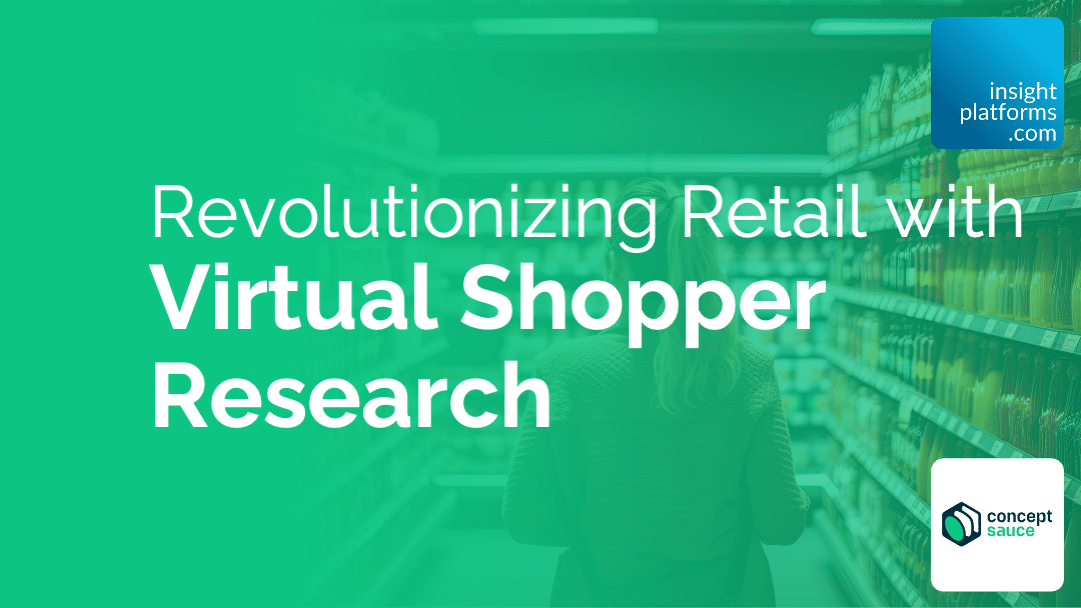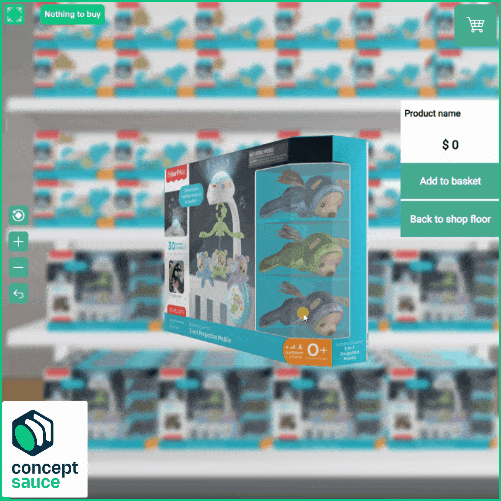
Revolutionizing Retail with Virtual Shopper Research
By Concept Sauce
- article
- Virtual Reality Research
- Shopper Research
Placing items at the shopper’s eye level and hoping to capture consumers’ simply doesn’t cut it anymore. Recent global economic adversities have caused shoppers to be more conscious of their spending habits and they prioritize buying for necessity over momentary desires. Impulse shopping decisions are dwindling – in 2023, only 36% of shoppers continued to make impulse purchases, whereas 73% of shoppers attributed to this behavior in 2022.
Overall, shoppers are spending less time and money and are looking to spend even less energy making purchase decisions. Retailers and suppliers have to work together to align product placement with shopper needs so customers can navigate the store intuitively and discover products of genuine interest.
For over a decade, Concept Sauce has been exploring how people make purchasing decisions to implement a unique approach that combines digital strategies with shopper-focused plans to emphasize users’ needs over products’ attributes augmented by 3D technology.
Enter: Modernized shopper-centric planograms.

Through analyzing consumer preferences and behaviors, our virtual shopper research technology can replicate physical, in-store shopping experiences to allow brands to test product packaging, pricing, and shelf arrangements digitally without the limitations of traditional physical shopping research.
What are Planograms?
In retail, a planogram is a tool that strategically organizes products on store shelves to boost sales and enhance the shopper’s experience. Similar to a detailed blueprint, planograms help category managers ensure that items are systematically arranged to be visible to and entice shoppers.
Historically, traditional planogramming involved manual processes and sharing static documents, like PDFs, with decisions based on sales data. This method lacked precision and scalability, and these planograms were time-consuming and inflexible, unable to quickly adapt to shifting consumer behaviors without a complete overhaul.
These approaches primarily focused on the physical aspects of products, like size and packaging, rather than catering to shoppers’ evolving needs and preferences.
Concept Sauce uses consumer insights to identify key segments and craft a digital planogram. Collaborating with brands, we pinpoint different shopper groups by tracking in-store behavior and observing shopping attitudes, answering important questions such as:
- How do consumers interact with products in-store, and what factors influence their decision-making process?
- How do consumers respond to changes in product packaging or labeling?
- Are there specific demographics or shopper segments that gravitate toward certain product categories, and how can these insights inform marketing strategies?
- How do pricing strategies (such as discounts, bundles, or loyalty programs) affect consumer perceptions and purchasing behavior?

A Real-world Example
Shopper-centric planograms mark a departure from focusing solely on product attributes to prioritizing the understanding and fulfillment of shopper needs. This method organizes products to encourage quicker and more satisfying purchase decisions aligned with consumer interests, necessities, and rationale.
For instance, in the realm of organizing hair products in retail stores:
While category managers may initially prioritize grouping hair products by the popularity of brands and consideration towards the physical properties of storage containers (like boxes vs tubs of hair products), they overlook the unique personalization of hair care experienced by their customers.
Research shows that less than 20% of people worldwide have curly hair. Therefore, it makes sense that straight hair or general care products are more well-known or popular not only among consumers but also in production.
However, this doesn’t mean that there isn’t a major market for curly hair products or that customers are willing to compromise on the products they use. In fact, research shows that women with textured hair, on average, are willing to spend up to 78% more on hair care products than women with straight hair.
By failing to value the unique needs of their consumers, retailers and suppliers not only miss out on a major market opportunity—they may also accidentally increase the frustration that textured-hair consumers experience during their shopping experience due to the limited variety and difficulty in locating effective products for their hair type.
How to Prioritize Understanding Shopper Needs Over Product Features?
Start with a robust analysis of shopper data, utilizing advanced analytics to gain insights into purchase history and demographics. Identify key factors like brand familiarity, sustainability initiatives, and user-friendliness.
Integrate these insights with a virtual 3D shelf-building tool such as Concept Saudce, where products are strategically grouped and organized to appeal to shoppers and complement each other effectively on display.
We believe in categorizing brands in-store by pinpointing factors or characteristics that directly reflect shoppers’ needs and preferences, such as:
- pricing
- sustainability or durability
- eco-friendly
- comfort and usability
- physical attributes like size and sensory attributes
3D Virtual Shelves significantly modernize the planogram and consumer shopping experience testing process, allowing category managers to refine product placement strategies.
When studying market research and consumers’ interactions with brands, such as reviews and commentary online, you might investigate:
- What should be considered a ‘positive’ shopping experience for target audiences?
- How can products be organized to be accessible to the people buying them in stores?
- What products coincide with one another? Which products should be kept separately not to deter shoppers (exp., alcoholic beverages and medical health products)
- Are there seasonal trends or changes in consumer behavior that should be reflected in the planogram?

Final Thoughts
The intersection of AI, advanced analytics, and digital simulations pushes the retail industry towards a more dynamic and responsive future where product placement aligns seamlessly with ever-evolving consumer preferences.
The Shopper-Centric Approach for Category Growth: Revolutionizing Planogramming
To learn more about the impact of shopper-centric planograms on category growth and customer satisfaction and the challenges and strategies for implementation by category managers, retailers, and suppliers, get our free ebook above for more in-depth insights.


